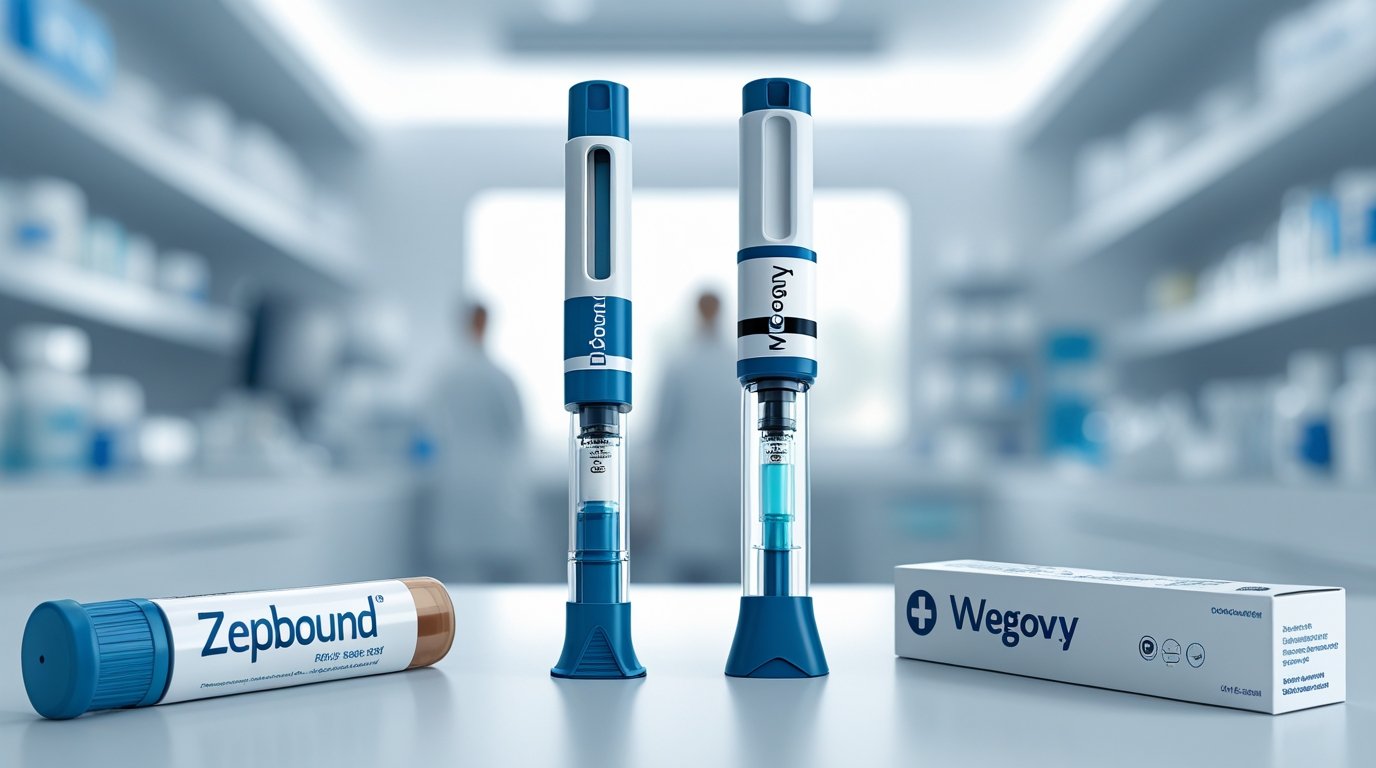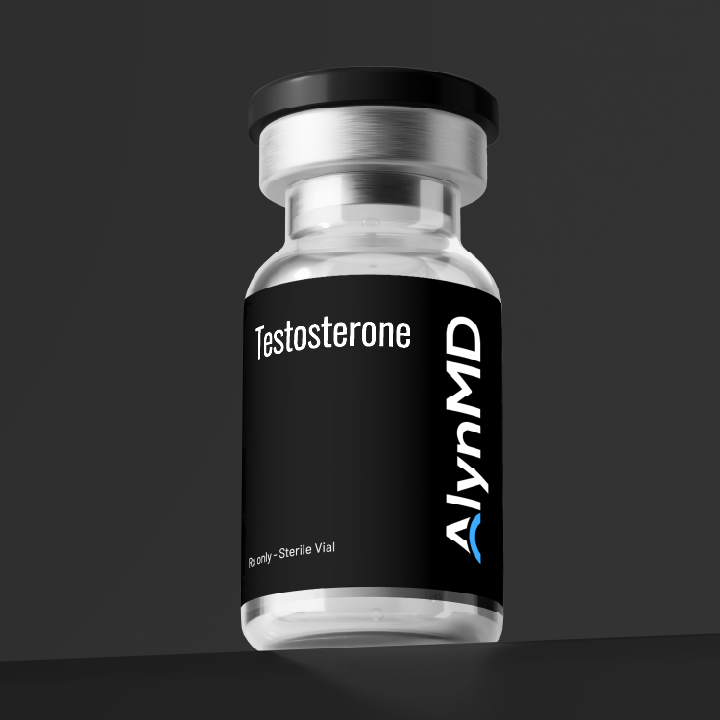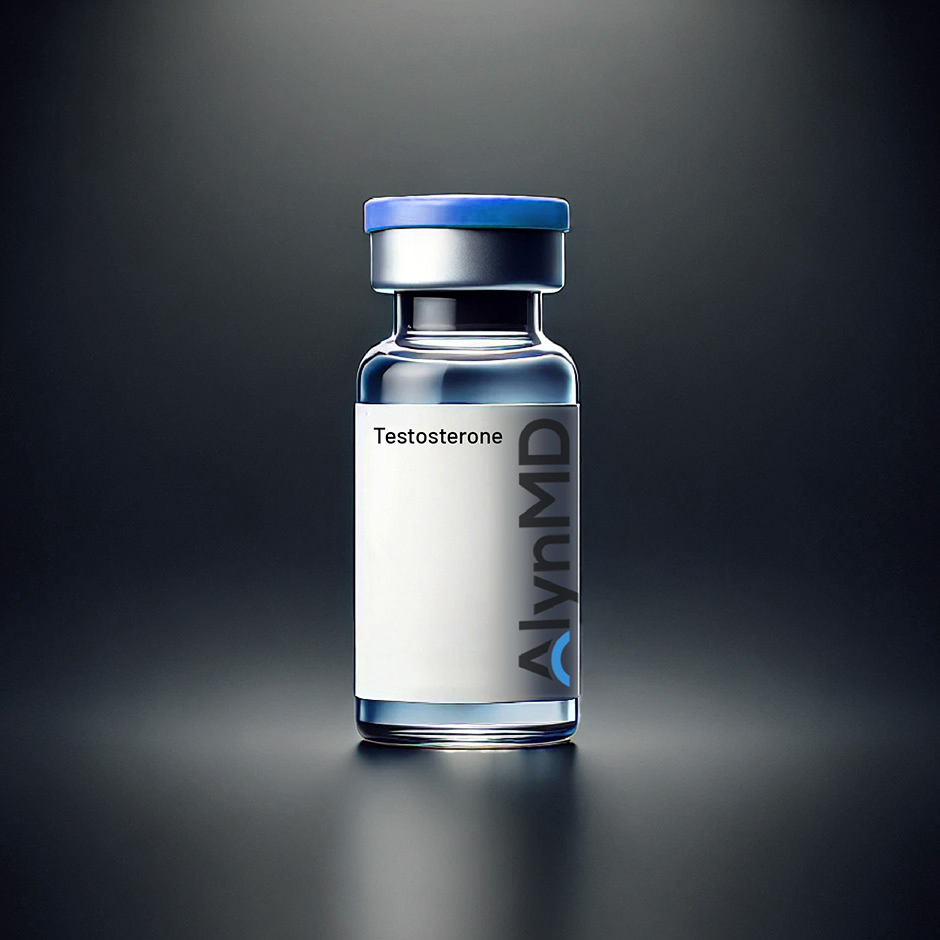
Introduction: A New Era in Metabolic Health
The landscape of metabolic health is undergoing a seismic shift, driven by a class of medications that have moved from specialized diabetes care to the forefront of mainstream health discussions. Glucagon-like peptide-1 (GLP-1) receptor agonists, or GLP-1 RAs, represent more than just a new treatment; they embody a new era in our ability to manage chronic conditions like type 2 diabetes and obesity. Their profound impact on blood sugar, weight, and cardiovascular health has captured the attention of patients and clinicians alike, sparking both hope and critical questions. This rapid ascent is reflected in prescribing trends; from 2018 to 2023, Semaglutide prescriptions alone surged from 5% to 63% among GLP-1 RA users, signaling a fundamental change in treatment paradigms.
What are GLP-1 Receptor Agonists (GLP-1 RAs)?
 Comparison of Natural GLP-1 and GLP-1 RA Mechanisms
Comparison of Natural GLP-1 and GLP-1 RA Mechanisms
GLP-1 receptor agonists are a class of medications designed to mimic the action of a naturally occurring gut hormone called glucagon-like peptide-1. This hormone is a key player in the “incretin system,” our body’s intelligent way of managing blood sugar after a meal. When we eat, our intestines release GLP-1, which sends signals to the pancreas to release insulin, suppresses the release of glucagon (a hormone that raises blood sugar), and communicates with the brain to promote feelings of fullness. GLP-1 RAs are synthetic versions of this hormone, engineered to last longer and have a more potent effect than the GLP-1 our bodies produce naturally.
The Rise of GLP-1 RAs: Why They Matter
 Growth in GLP-1 RA Prescriptions and Treatment Initiation (2018-2023)
Growth in GLP-1 RA Prescriptions and Treatment Initiation (2018-2023)
The significance of GLP-1 RAs extends far beyond their initial indication for type 2 diabetes. Their powerful effects on weight loss have positioned them as a breakthrough therapy for obesity, a complex chronic disease that has long lacked effective pharmacological tools. The increasing use of these medications for weight management is stark; between 2019 and 2023, the number of patients without diabetes starting GLP-1 RA treatment in the US increased by over 700%. This surge underscores their ability to address two of the most pressing public health challenges of our time. Strong clinical trials have shown that GLP-1 RAs protect the heart and kidneys. They have become tools that improve overall health, not just treat specific symptoms.
Purpose of This Article
This comprehensive guide serves as an authoritative resource on GLP-1 receptor agonists. We will decode their intricate mechanism of action, explore their full spectrum of therapeutic benefits, and provide a structured, transparent assessment of their potential risks and side effects. By examining the practical aspects of treatment—from dosing and monitoring to the crucial role of lifestyle integration—this article aims to empower patients and clinicians with the knowledge needed for informed, shared decision-making. Our goal is to move beyond the headlines, offering a nuanced understanding of these powerful medications as a key component of a modern, evidence-led approach to metabolic and hormone care.
Working With Alyn MD: Your GLP-1 Telehealth Partner
Why partner with Alyn MD for GLP-1 therapy? Because results come from more than a prescription. Alyn MD pairs evidence-based GLP-1 care (Semaglutide, Tirzepatide) with structured monitoring, nutrition and lifestyle guidance, and pragmatic support around access and adherence.
What the Alyn MD program looks like (end-to-end):
- Clinical Intake & Goal Setting (Televisit): Metabolic history, meds, contraindication screen (MTC/MEN2, pancreatitis, severe GI disease), and shared decision-making on Semaglutide vs. Tirzepatide based on goals, tolerance, and cardiometabolic profile.
- Baseline Labs (Nationwide in-person draw): Alyn MD issues lab orders you can complete at your nearest Labcorp or Quest Diagnostics location—no at-home kits. Baseline typically includes A1C/fasting glucose, CMP, eGFR, lipids (with ApoB when indicated), TSH, and additional markers based on your history.
- Medication Start & Titration Plan: “Start low, go slow” to reduce GI effects and improve adherence (see dosing frameworks below).
- Nutrition, Activity & Body-Composition Support: Practical, sustainable plans emphasizing adequate protein and resistance training to preserve lean mass; guidance to manage appetite changes and plateaus.
- Follow-ups & Lab Re-checks (Telehealth): Regular check-ins to review weight trend, side effects, vitals, medication timing, and labs (e.g., A1C and lipids at 3–6 months).
- Access & Continuity: We help navigate supply issues, dose adjustments, and transitions between strengths so you don’t lose momentum.
- Long-Term Strategy: Maintenance planning (with or without continued medication), relapse prevention, and cardiometabolic optimization beyond weight loss.
What sets Alyn MD apart
- GLP-1 specialization: Program built around Semaglutide and Tirzepatide for obesity and cardiometabolic health—no “one-size-fits-all.”
- Structured titration + side-effect playbook: Evidence-guided dosing and a practical nausea/constipation protocol to keep you on track.
- Nationwide lab access: In-person draws through Labcorp and Quest for consistent, high-quality results that inform individualized care.
- Data-driven monitoring: We look past the scale—glucose control, lipids (including ApoB when appropriate), blood pressure, and body-composition targets.
- Telehealth convenience, clinical rigor: Virtual visits without sacrificing clinical standards, safety checks, or accountability.
Decoding the Mechanism: How GLP-1 RAs Work
To appreciate the impact of GLP-1 RAs, it’s essential to first understand the elegant biological system they leverage. These medications are not a foreign concept to the body; rather, they amplify a natural process that regulates appetite, blood sugar, and digestion.
The Natural GLP-1 Hormone: Our Body’s Internal Regulator
After you eat a meal, specialized cells in your small intestine release incretin hormones, with GLP-1 being one of the most important. This hormone acts as a sophisticated messenger, coordinating a multi-system response to the influx of nutrients.
- Pancreatic Action: GLP-1 travels to the pancreas, where it binds to its receptors on beta cells, stimulating a glucose-dependent release of insulin. This means insulin is only released when blood sugar is high, a crucial safety mechanism that minimizes the risk of hypoglycemia (low blood sugar). Simultaneously, it suppresses the release of glucagon from alpha cells, preventing the liver from producing excess sugar.
- Gastric Motility: GLP-1 slows down gastric emptying, the rate at which food leaves the stomach. This delay prevents sharp spikes in blood sugar after meals and contributes to a prolonged feeling of fullness.
- Central Nervous System Effects: GLP-1 crosses the blood-brain barrier and acts on appetite centers in the brain, enhancing feelings of satiety and reducing the drive to eat.
The challenge with our natural GLP-1 is its short lifespan. An enzyme called dipeptidyl peptidase-4 (DPP-4) breaks it down within minutes, limiting its therapeutic potential. This is where GLP-1 RAs come in.
Mimicking Nature: The Actions of GLP-1 RAs
GLP-1 receptor agonists are designed to be resistant to DPP-4 degradation, allowing them to remain active in the body for much longer—from hours to an entire week, depending on the formulation. Their pharmacokinetics are engineered for sustained action. When administered, they bind to and activate GLP-1 receptors throughout the body, producing an amplified and prolonged version of the natural incretin effect.
Their key actions include:
- Enhanced Insulin Secretion: They prompt a powerful, glucose-dependent insulin release to manage blood sugar levels effectively.
- Suppressed Glucagon Secretion: They reduce the counterproductive release of glucagon when blood sugar is already elevated.
- Delayed Gastric Emptying: This contributes significantly to both glycemic control and appetite suppression, leading to reduced calorie intake.
- Increased Satiety: By directly signaling to the brain’s appetite control centers, they help reduce hunger and food cravings, making it easier to adhere to nutritional plans.
This multi-pronged mechanism makes GLP-1 RAs uniquely effective in addressing the core physiological drivers of both type 2 diabetes and obesity.
Primary Therapeutic Benefits: Addressing Type 2 Diabetes and Obesity
The dual-action mechanism of GLP-1 RAs on both blood sugar and appetite regulation has established them as cornerstone therapies for two of the world’s most prevalent metabolic diseases.
Effective Management of Type 2 Diabetes
For individuals with type 2 diabetes, GLP-1 RAs offer comprehensive glycemic control that goes beyond simply lowering blood sugar.
- A1C Reduction: Clinical trials consistently demonstrate their ability to significantly lower hemoglobin A1C, a key marker of long-term blood sugar control. Their efficacy is often superior to older classes of diabetes medications.
- Improved Insulin Resistance: By promoting weight loss and reducing glucotoxicity, GLP-1 RAs can improve the body’s sensitivity to insulin over time.
- Low Hypoglycemia Risk: Because their insulin-stimulating effect is glucose-dependent, they carry a very low risk of causing dangerously low blood sugar when used as monotherapy. This risk can increase when used in combination with other medications like basal insulin or sulfonylureas.
- Flexible Combination Therapy: They work well alongside other common diabetes medications like metformin and SGLT2 inhibitors, allowing for personalized, multi-target treatment strategies. The data reflects their growing role; in 2024, 26.5% of adults with diagnosed diabetes used GLP-1 injectables, with the highest usage in the 50-64 age group.
Powerful Tool for Chronic Weight Management (Obesity)
Perhaps the most publicized benefit of GLP-1 RAs is their profound effect on weight. They are the first class of medications to produce weight loss outcomes that begin to approach those seen with bariatric surgery, providing a viable non-surgical option for many.
- Significant Weight Loss: The efficacy of these drugs for weight loss is well-documented. A real-world study in 2025 found that users lost an average of 7.7% of their body weight on semaglutide and 12.4% on tirzepatide after one year. This level of weight loss can lead to dramatic improvements in obesity-related comorbidities.
- Targeted Fat Loss: When combined with adequate nutrition, particularly a high-protein diet, and resistance exercise, GLP-1 RAs can help prioritize fat loss while preserving lean muscle mass. This focus on body composition is critical for maintaining metabolic rate and physical function during weight loss.
- Sustained Maintenance: The medications’ effect on satiety and appetite regulation helps individuals maintain weight loss over the long term, addressing the common challenge of weight regain after dieting. The impact on the obesity treatment landscape has been significant, with bariatric surgeries declining by 25.6% between 2022 and 2023 as GLP-1 use increased.
Beyond the Pancreas: Broader Health Impacts and Emerging Applications
The influence of GLP-1 RAs extends far beyond the pancreas and gut. By addressing underlying metabolic dysfunction, these medications have demonstrated protective effects on the cardiovascular and renal systems, with research exploring their potential in other areas.
Proven Cardiovascular Protection
A landmark achievement for this class of drugs has been the consistent demonstration of cardiovascular benefits in large-scale outcome trials. For patients with type 2 diabetes and established cardiovascular disease, certain GLP-1 RAs have been shown to reduce the risk of major adverse cardiovascular events (MACE), a composite of heart attack, stroke, and cardiovascular death. For instance, adding semaglutide to standard care reduced the risk of MACE by 20% in overweight patients with a history of cardiovascular disease.
This protection is thought to be multifactorial, stemming from:
- Improved Glycemic Control: Better blood sugar management reduces stress on the vascular system.
- Weight Loss and Reduced Blood Pressure: Lowering body weight and blood pressure directly decreases cardiovascular strain.
- Favorable Lipid Profiles: GLP-1 RAs can lower triglycerides and improve other lipid markers. A focus on advanced lipids like ApoB, a more accurate measure of atherogenic particle number, often shows significant improvement, further clarifying their role in risk reduction.
- Potential Anti-inflammatory and Anti-atherosclerotic Effects: Emerging evidence suggests GLP-1 RAs may have direct beneficial effects on blood vessels, reducing inflammation and plaque formation.
Potential for Kidney Health
Chronic kidney disease is a common and serious complication of type 2 diabetes. Several large clinical trials have shown that GLP-1 RAs can provide significant renal protection. They have been found to slow the decline in kidney function and reduce the risk of albuminuria (excess protein in the urine), a key marker of kidney damage. This renal benefit makes them a preferred choice for many patients with co-existing diabetes and kidney disease, often used in combination with SGLT2 inhibitors for synergistic protection.
Exploring New Frontiers: Neurological and Other Applications
The presence of GLP-1 receptors in the brain has prompted research into their potential neurological benefits. Early studies are exploring their role in neurodegenerative diseases like Parkinson’s and Alzheimer’s, with some promising initial signals related to neuroprotection and reduced inflammation.
Other areas of active investigation include:
- Non-alcoholic Fatty Liver Disease (NAFLD): By promoting weight loss and improving insulin sensitivity, GLP-1 RAs have been shown to reduce liver fat and inflammation, potentially slowing the progression of NAFLD.
- Polycystic Ovary Syndrome (PCOS): Given the strong link between PCOS and insulin resistance, GLP-1 RAs are being studied as a treatment to improve metabolic and reproductive outcomes in women with this condition.
- Addiction and Compulsive Behaviors: Early research suggests that by modulating the brain’s reward pathways, GLP-1 RAs may reduce cravings for alcohol and other substances, opening a potential new avenue for addiction medicine.
Understanding the Risks: A Structured Assessment for Informed Decisions
While GLP-1 RAs offer substantial benefits, they are powerful medications with a distinct side effect profile and specific safety considerations. A transparent understanding of these risks is essential for any individual considering this therapy.
Differentiating “Hazards” from “Risks” in GLP-1 RA Therapy
In medicine, it’s crucial to distinguish between a “hazard” (a potential source of harm) and a “risk” (the likelihood of that harm occurring). For GLP-1 RAs, gastrointestinal side effects are a common hazard, but their risk can be managed. Serious events like pancreatitis are also hazards, but their statistical risk is very low. A balanced discussion involves acknowledging all potential hazards while accurately contextualizing their real-world risk.
Common Side Effects and Their Management
The most frequent side effects of GLP-1 RAs are gastrointestinal, stemming directly from their mechanism of action, particularly the slowing of gastric motility. A RAND report highlighted that approximately 50% of users reported experiencing nausea, with about one-third reporting diarrhea.
- Nausea, Vomiting, Constipation, and Diarrhea: These are most common when starting the medication or after a dose increase.
- Management Strategies:
- Titration: The “start low, go slow” approach is critical. A gradual GLP-1 titration schedule allows the body to adapt, significantly minimizing side effects.
- Dietary Adjustments: Eating smaller, more frequent meals, avoiding high-fat or greasy foods, and staying well-hydrated can alleviate symptoms.
- Timing: For some, adjusting the timing of injection or meals can make a difference.
- Counseling: Working with a clinician or health coach can provide personalized strategies for managing these effects.
Alyn MD Playbook for GI Symptoms
- Meal strategy: Smaller portions, chew thoroughly, pause between bites; prioritize lean protein and low-fat preparation, especially on escalation weeks.
- Hydration & fiber: Daily hydration goals with gradual fiber (e.g., psyllium) to prevent constipation.
- Timing: If queasy, inject in the evening or align with a lighter-food day.
- OTC supports: As clinically appropriate—ginger, antacids for early dyspepsia; stool softeners or osmotic agents for constipation.
- Escalation holds: If moderate symptoms persist, hold at current dose 2–4 weeks before advancing.
- Escalation alternatives: Consider smaller interim steps (e.g., semaglutide 1.0 → 1.7 with extended hold) when sensitive.
Most patients find that these side effects are mild to moderate and diminish over time as their body adjusts. However, if they are severe or persistent, medical guidance is necessary.
Less Common but Serious “Safety Risks”
Beyond the common GI issues, there are several less common but more serious potential risks that require careful monitoring and patient education.
- Pancreatitis: An inflammation of the pancreas. While the absolute risk is low, there is a small increased association. Patients should be instructed to seek immediate medical attention for severe, persistent abdominal pain that may radiate to the back.
- Cholelithiasis (Gallstones): Rapid weight loss from any cause can increase the risk of developing gallstones. This is not unique to GLP-1 RAs but is a relevant consideration for anyone undergoing significant weight loss on these medications.
- Thyroid C-cell Tumors: In rodent studies, GLP-1 RAs were associated with a type of thyroid tumor called medullary thyroid carcinoma (MTC). While this link has not been established in humans, it has led to a boxed warning from the FDA.
Contraindications and Precautions
Due to these risks, GLP-1 RAs are not suitable for everyone. Key contraindications include:
- Personal or family history of Medullary Thyroid Carcinoma (MTC).
- Multiple Endocrine Neoplasia syndrome type 2 (MEN 2).
- History of pancreatitis.
- Known hypersensitivity to the drug.
Precautions are also necessary for individuals with severe gastrointestinal disease (e.g., gastroparesis). Potential drug interactions, such as those with oral medications that require rapid absorption, should be discussed with a healthcare provider.
Navigating Treatment: Practical Considerations and Clinical Guidance
Successfully integrating GLP-1 RA therapy into a patient’s life requires a structured approach that goes beyond simply writing a prescription. It involves careful dosing, ongoing monitoring, and addressing practical barriers like cost and access.
Administration and Dosing Protocols
GLP-1 RAs are available in various formulations, and the choice depends on clinical need and patient preference. While the injectable segment led the market with an 83% share in 2024, oral options are becoming more prevalent.
- Formulations: Most GLP-1 RAs are self-administered via subcutaneous injection using a simple pen device, typically on a once-weekly schedule. Daily injections and once-daily oral tablets are also available.
- Dosing and Titration: The cornerstone of safe and effective treatment is the “start low, go slow” titration principle. Treatment begins at a low, non-therapeutic dose to allow the body to acclimate. The dose is then gradually increased every four weeks (or as clinically indicated) based on tolerance and therapeutic response (e.g., A1C, weight). This careful dose escalation is the single most important strategy for mitigating gastrointestinal side effects and ensuring long-term adherence.
Ongoing Monitoring and Follow-Up
GLP-1 RA therapy is not a “set and forget” treatment. Regular follow-up and monitoring are essential to assess efficacy, manage side effects, and ensure safety.
- Clinical Check-ins: Regular appointments, which can be facilitated effectively through telehealth and telemedicine platforms, allow for discussions about side effects, adherence, and progress toward goals.
- Lab Monitoring: Periodic checks of A1C, kidney function, and liver enzymes are standard practice. Monitoring advanced lipids like ApoB can provide a more nuanced picture of cardiovascular risk reduction.
- Weight and Body Composition: For patients using these drugs for weight management, tracking weight is important, but focusing on body composition (muscle vs. fat) through counseling on nutrition and exercise yields better long-term health outcomes.
- Plateau Management: It is common for weight loss to plateau. This is a critical point for clinical intervention, which may involve adjusting the dose, intensifying lifestyle interventions, or considering combination therapy.
Monitoring With Alyn MD: What We Track and Why
- Clinical check-ins (telehealth): 4–6 weeks after start and each escalation; then every 8–12 weeks once stable.
- Key labs:
- Glycemic control: A1C or fasting glucose at baseline and ~12 weeks after reaching a stable dose.
- Renal/hepatic: eGFR and CMP at baseline and periodically.
- Cardiovascular risk: Lipid panel at baseline and 3–6 months after dose stabilization; consider ApoB when available for particle-number targeting.
- Thyroid: TSH when clinically indicated.
- Body composition & vitals: Weight trend, waist circumference, resistance-training adherence, and blood pressure.
- Plateau protocol: Reassess protein intake, resistance training frequency, sleep, meds that promote weight gain; consider dose optimization or adjuncts if appropriate.
Cost and Accessibility Factors
The high price of GLP-1 RAs is a significant barrier to care. The global market is projected to reach an astounding $471.1 billion by 2032, reflecting both their efficacy and cost.
- Pricing and Insurance: Without insurance coverage, the out-of-pocket cost can be prohibitive for many. Coverage varies widely, with many plans requiring prior authorizations or step therapy.
- Shortages: The explosive demand has led to widespread and persistent drug shortages, creating challenges for both new and existing patients trying to access their medication consistently.
- Access and Equity: These factors raise important ethical questions about equitable access to transformative medical care. Telehealth providers and patient advocacy groups are working to navigate these complex issues, but they remain a major challenge.
The Individualized Journey: Risk Perception and Shared Decision-Making
The decision to start GLP-1 RA therapy is deeply personal and should be the result of a collaborative process between the patient and their clinician. This involves weighing the objective data against an individual’s values, goals, and risk tolerance.
Balancing “Benefits” and “Risks”: A Personal Calculus
For a person with poorly controlled type 2 diabetes and a history of heart attack, the 20% reduction in future cardiovascular events may heavily outweigh the risk of transient nausea. For another individual seeking to lose a moderate amount of weight with no other comorbidities, the same side effect profile might be viewed differently. There is no single right answer. This personal calculus must consider:
- Severity of the underlying condition (Diabetes, Obesity, Cardiovascular Disease).
- Potential for benefit (degree of A1C reduction, expected weight loss, risk reduction).
- Individual tolerance for common side effects.
- The presence of any contraindications or relative precautions.
- The financial and logistical burden of treatment.
Empowering Patient “Autonomy” Through Informed Choice
True patient autonomy is built on a foundation of comprehensive, unbiased information. The role of the clinician is not to dictate treatment but to act as an expert guide, presenting the evidence and helping the patient interpret it in the context of their own life. This shared decision-making process fosters trust and improves treatment adherence. It involves discussing not just the medication itself, but also the critical role of supportive lifestyle changes in nutrition and exercise. It also means honestly addressing the stigma that can surround obesity and the use of weight loss medications, empowering patients to make choices that prioritize their long-term health and well-being without judgment.
Conclusion: A Powerful Tool with Careful Application
GLP-1 receptor agonists have fundamentally altered the therapeutic possibilities for managing metabolic disease. They are not a “magic bullet,” but rather a sophisticated class of smart tools that, when used correctly within a comprehensive care model, can produce life-changing outcomes. They can improve blood sugar control, cause significant weight loss, and protect the heart and kidneys. This shows their strong and varied effects.
Recapping Key Insights
This guide has highlighted several important points. GLP-1 RAs work by boosting the body’s natural incretin system. Their benefits go beyond blood sugar and weight. They also improve overall heart and metabolic health. Using them requires a careful and personalized approach. The most common side effects are manageable with proper titration and support, while the risk of serious adverse events is low but requires vigilance. The success of GLP-1 RA therapy depends on a partnership between an informed patient and a knowledgeable doctor. This partnership is based on shared decision-making. It also includes a complete view of health that combines medicine with lasting lifestyle habits. As research continues to unlock their full potential, these medications are poised to remain a cornerstone of metabolic medicine for years to come, offering new hope for improved healthspan and quality of life for millions.





















